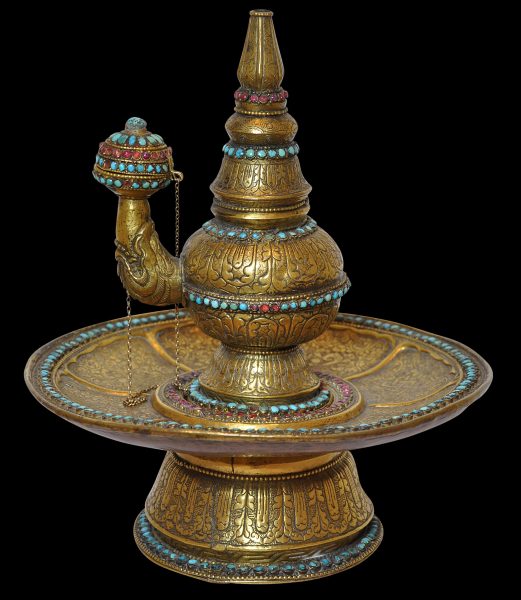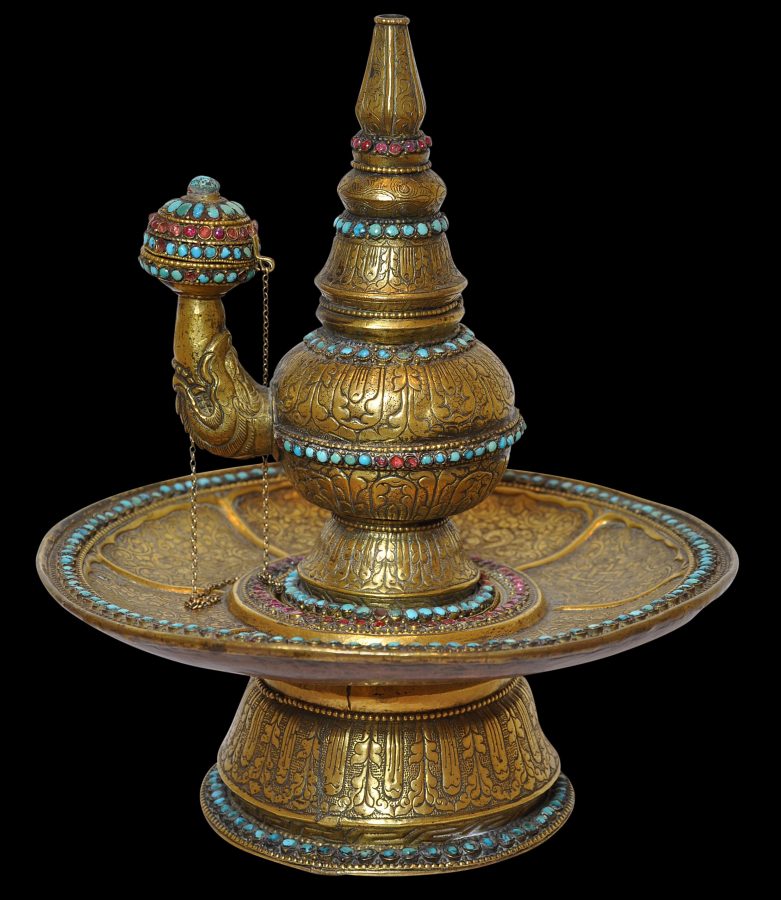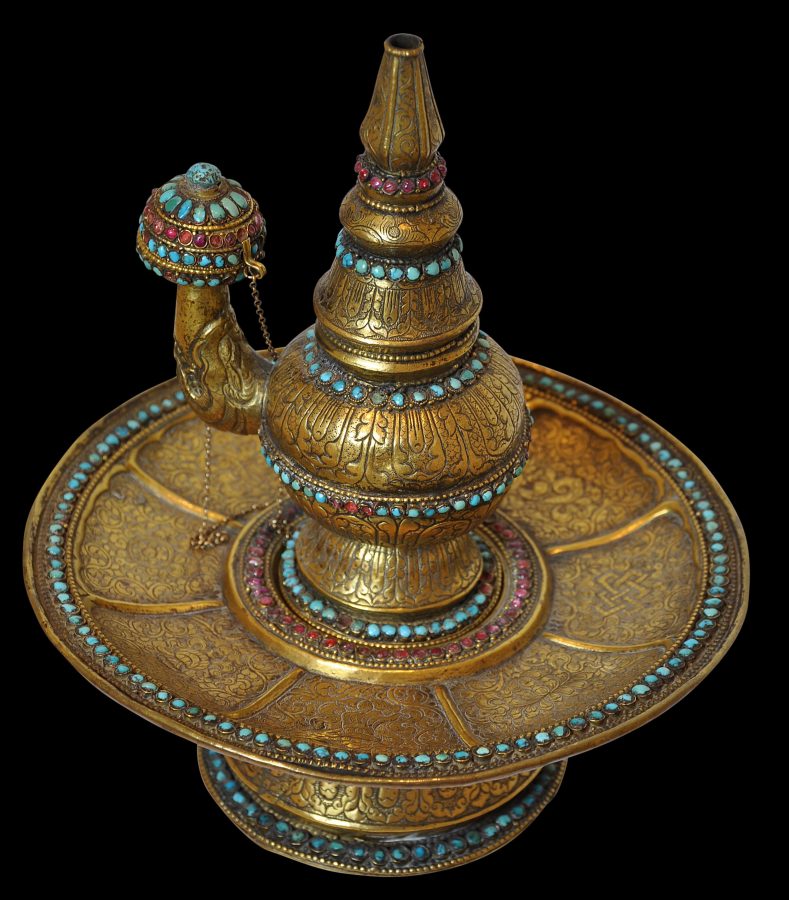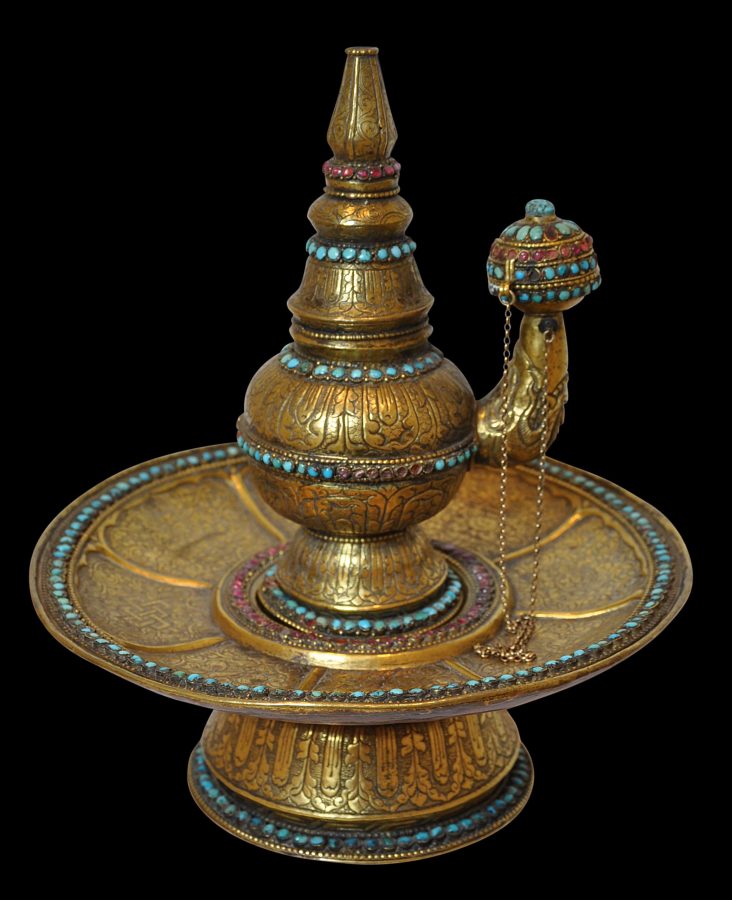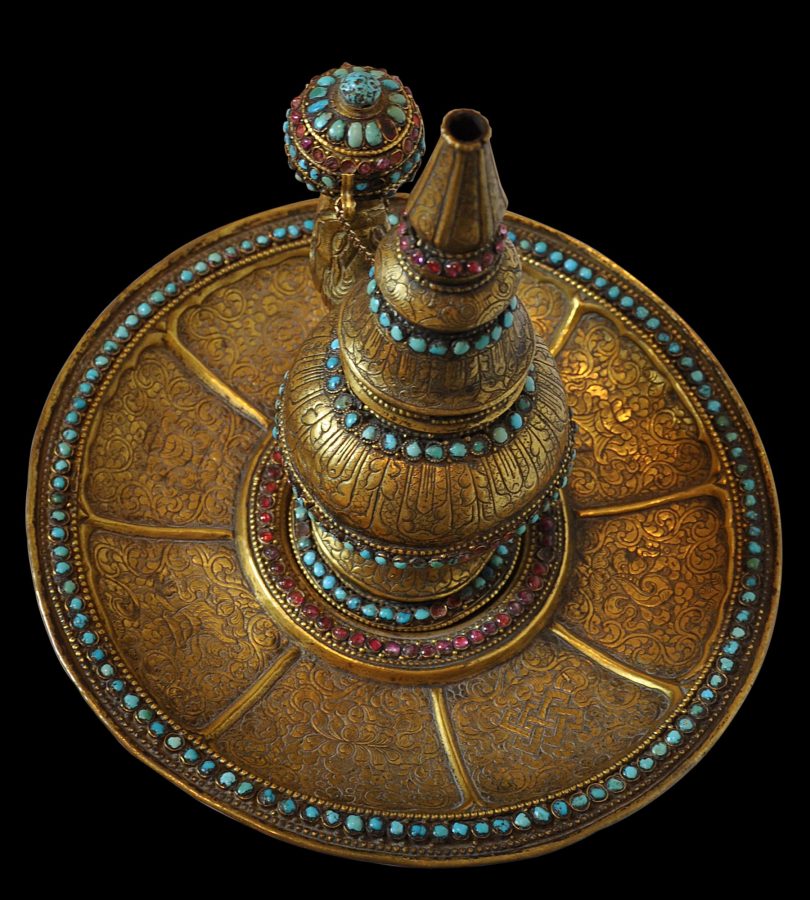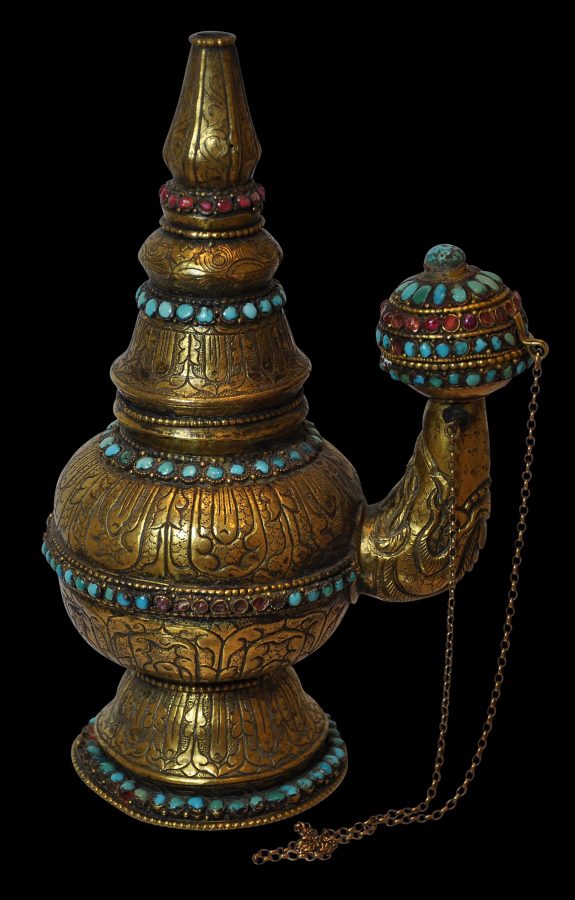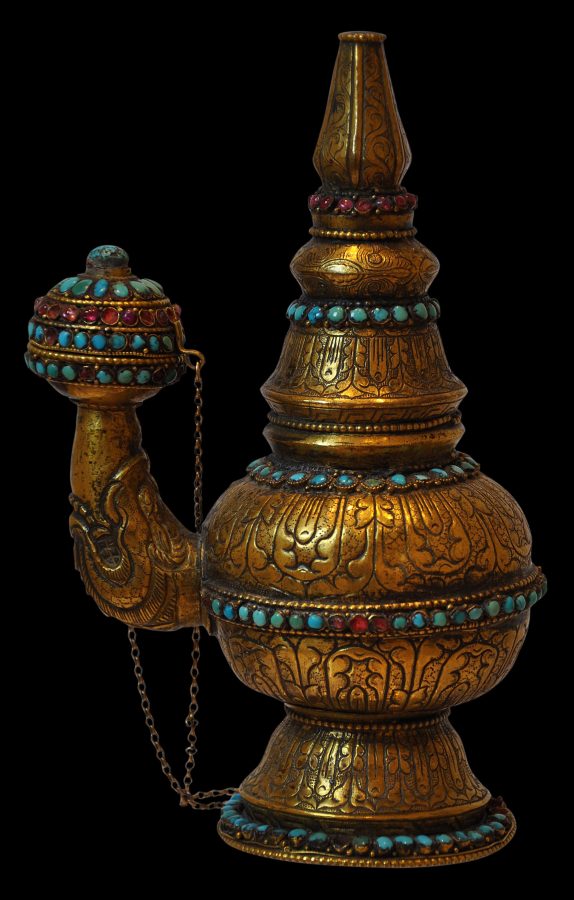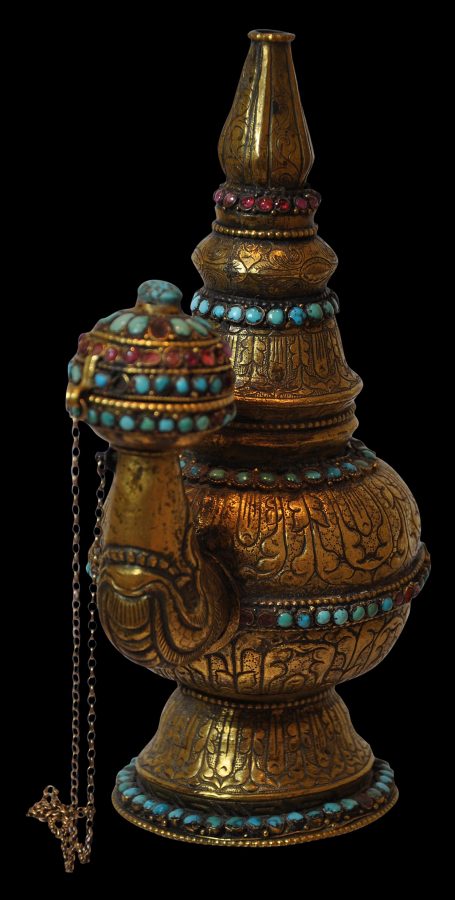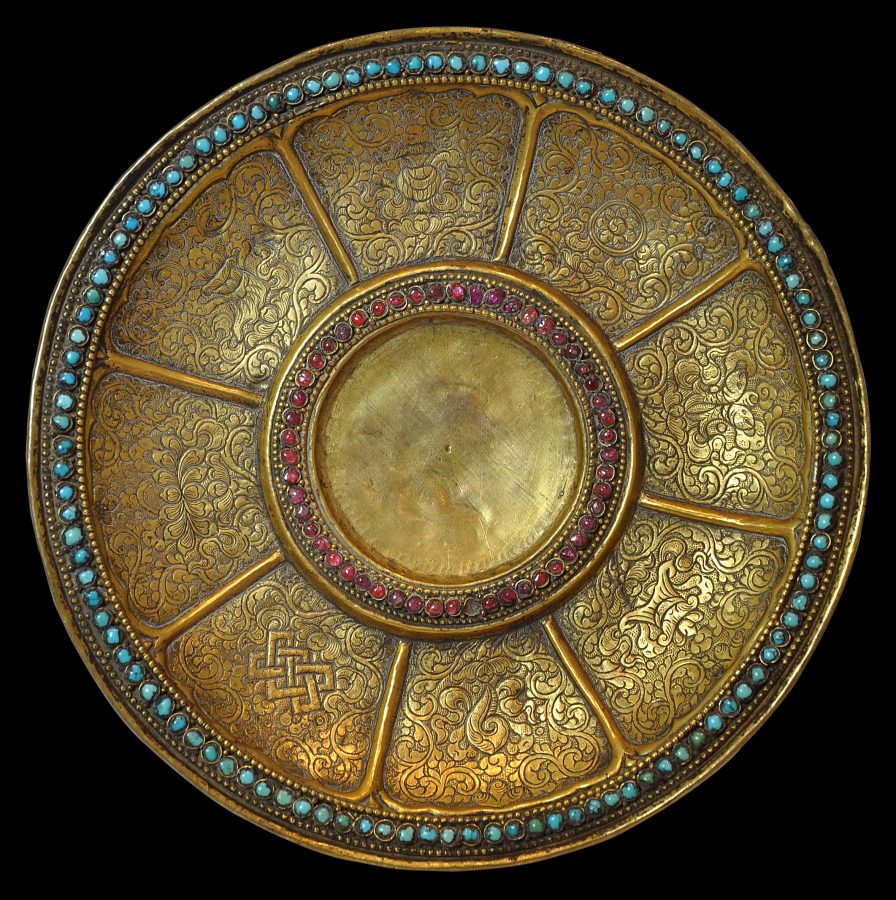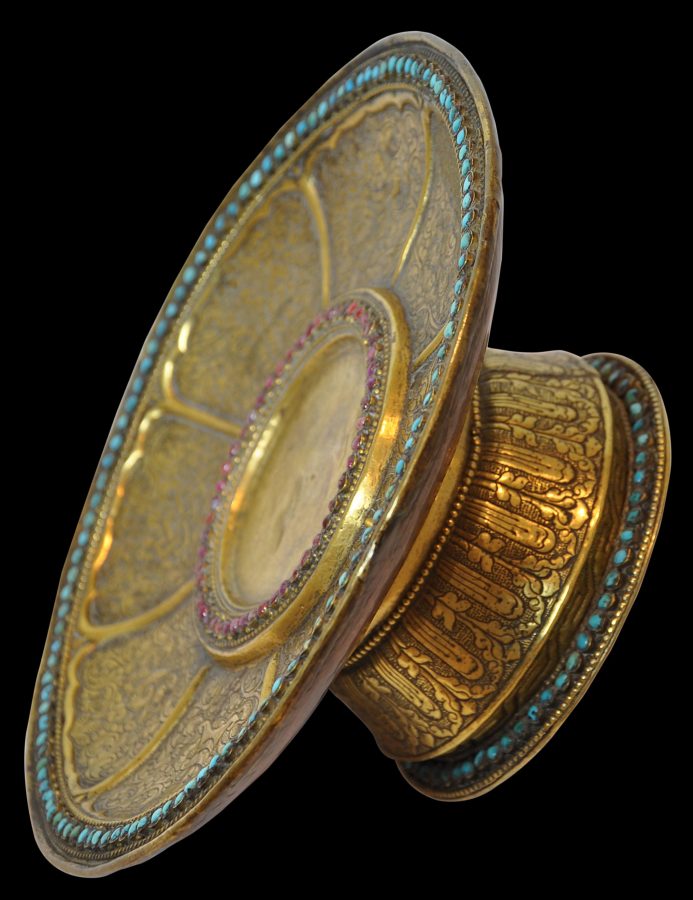Vessels such as this example are based on the larger kundika flasks of India. In Tibet, the form was also known as spyi-blugs and sometimes as chi-lik. Such vessels were commissioned for use in Tibetan monasteries and temples and were used by Tibetan monks to rinse their mouths of impurities before prayer of after meals (Pal, 1969, p. 158).
Several vessels of this form are in public collections or have been published (see here for a cloisonne example in the British Museum) but this is the only example we have observed with a matching footed basin.
The vase, of gilded sheet bronze and copper with a hammered silver bottom, has a globular body, a flared foot and a baluster-form, conical neck, leading to an opening. A spout issues from a makara-form collar which has a cupped mouth and a cover with lotus petal decoration. The cover is attached to the spout by a hand-made gilded chain. The body and spout are decorated with bands of ruby or spinel cabochons, turquoise cabochons, and gilded, pearled wire. The surface of the vessel is otherwise engraved with broad foliate bands. (There are some losses to the stones.)
The vessel sits on a footed basin of gilded hammered, sheet brass and copper. The basin is of concave form with a broad rim. The foot is high and flared. Both the basin and the vessel are engraved with foliate and petal motifs. The interior rim is engraved with the Eight Precious Objects within raised lotus petal borders. The footed basin is further embellished with rows of ruby or spinel cabochons and turquoise cabochons, and pearled wire.
The form of this ensemble is classically Tibetan, however small clues suggest Bhutanese influence or even provenance: one of the cartouches of the rim of the basin is engraved with Twin Fish that are back-to-back instead of facing each other – a trait sometimes observed in Bhutanese art.
The rim of the basin and the foot of the vessel are warped slightly and there are some losses to the inset stones. But this is a function of age and use. Overall, the vessel and basin are in a fine, stable condition. The gilding is largely intact and there are no repairs.
References
Lynn Levenberg, pers.comm.
Pal. P., The Art of Tibet, The Asia Society, 1969.
Shanghai Museum, Treasures from Snow Mountains: Gems of Tibetan Cultural Relics, Shanghai Museum, 2001.


